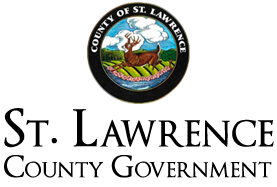PUBLIC HEALTH OFFICIALS, STATE LEGISLATIVE LEADERS CALL FOR INCREASED FUNDING FOR CHILDHOOD LEAD POISONING PREVENTION ACTIVITIES
Lower Blood Level Law Passed in 2019 Remains Underfunded
An Estimated 17,000 New York Children Under Age 6 Have Actionable Elevated Blood Lead Levels
(Albany, New York) Local public health officials, leading state policymakers and health advocates from across the state today called for increased funding to support a 2019 law designed to better protect children from lead poisoning. The law lowered from 10 to 5 micrograms per deciliter the actionable blood lead level necessary to trigger numerous public health interventions ranging from follow-up testing and clinical care coordination to environmental investigation of lead sources and management of abatement activities — services which are provided by local health departments (LHDs)
The estimated cost to implement the 2019 law was $40 million annually, however, the state provided just $9.7million, leaving a $30.3 million gap and creating a significant barrier to effective implementation of the law.
Data from 2017-2018 shows as many as 17,000 children under age 6 in New York State have actionable elevated blood lead levels, more than any other state in the nation. Additionally, secondary health consequences related to the pandemic have mounted, including children not being appropriately tested for lead levels, increasing the imperative for the state to increase the statewide lead poisoning prevention program appropriation in this year’s budget.
High blood lead levels in children cause both short- and long-term harm, ranging from anemia, nausea, hair loss, confusion, and muscle weakness to permanent serious damage to the brain, kidneys and bone marrow. Long term exposure to high levels can be fatal.
New York State Association of County Health Officials (NYSACHO) President and Onondaga County Commissioner of Health Dr. Indu Gupta said: “The 2019 law lowering the actionable blood lead level in children was sound public health policy that we strongly supported. However, it has become enormously difficult for local health departments to implement given the significant shortfall in state funding necessary for comprehensive implementation. Furthermore, we support CDC's recent recommendation of lowering actionable blood level from 5.0 microgram/dl to 3.5 microgram/dl, to protect the health of our children,
which will need additional resources for the public health work. Therefore, we are calling on state leaders to provide the support we need to ensure our work to protect children exposed to lead can be fully engaged and sustained.”
State Senator Gustavo Rivera, Chair of the Senate Health Committee, said: “When we accomplished lowering the actionable blood lead level in children in the 2019 budget, it was with the intention that local health departments would be supported to immediately and successfully implement prevention measures. It is crucial that our State fully funds this effort to protect all children in New York State from lead poisoning, particularly those under 6 who are the most vulnerable. I look forward to working with the Hochul administration to make this funding a reality in this year’s budget.”
Assemblywoman Michaelle Solages, Deputy Majority Leader and Chair of the New York State Black, Puerto Rican, Hispanic and Asian Legislative Caucus, said: “Environmental racism and failing infrastructure have plagued communities of color for decades. Every New Yorker deserves a healthy environment to learn, grow, and live in. That is why the BPHA Caucus is calling for the enacted budget to include increased funding for lead poisoning prevention. New York State has passed legislation to mitigate the harm of lead poisoning and we now need the required funds to implement it.”
State Senator Sean Ryan (D-Buffalo) said: “Any amount of lead exposure is dangerous – and that is why we worked to lower the actionable blood lead levels in 2019, ensuring more children at risk in New York would be able to get the help they need. It was an important step toward eradicating lead poisoning in our state, but the new standards will only help if we adequately fund the programs that we depend on to implement them. By prioritizing lead exposure as the major health risk that it is, we can show that we are truly committed to protecting the health and well-being of our children.”
New York City Health Commissioner Dr. Dave A. Chokshi said: ”The State must not reduce funding for crucial public health programs, such as the Childhood Lead Poisoning Prevention Program. New York City faces a $1.7M cut under the current proposal, and we use this vital funding to best protect our youngest New Yorkers from lead hazards. Additionally, we urge the State legislature to restore Article 6 base grant funding to 36% — a nearly $60M gap in public health funding is unacceptable anytime, but especially during a pandemic."
Paul Pettit, Public Health Director for Orleans and Genesee counties, said: “Childhood exposure to lead is a significant problem across New York, including in rural counties. The impact of the 2019 law is expected to increase actionable cases of elevated levels 10 fold in our region. This tremendous increase in workload requires additional resources and staffing to successfully implement the law.”
A comprehensive package of public health investments identified by NYSACHO, termed the “PREPARE Act,” includes a call for $30.3 million to support child lead poisoning prevention activities. The full PREPARE Act can be found at https://www.nysacho.org/wp- content/uploads/2021/12/PREPARE-Act-Canva_12.22.21.pdf.
###
